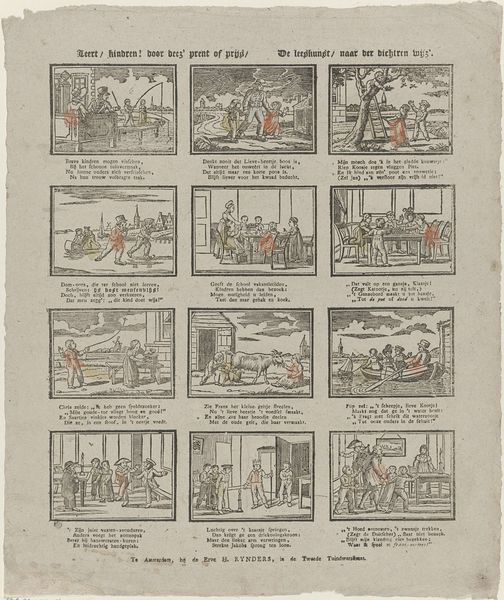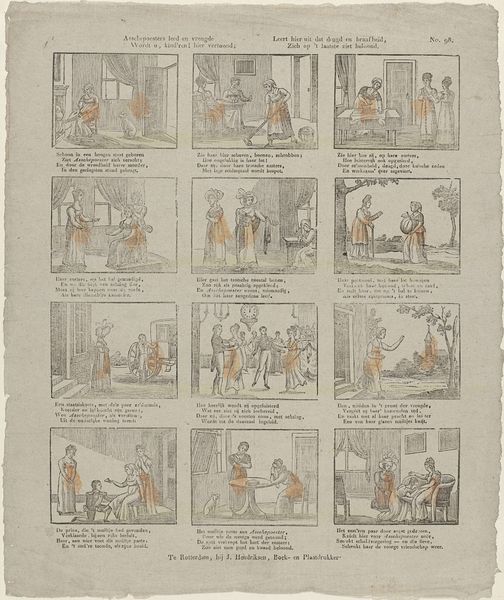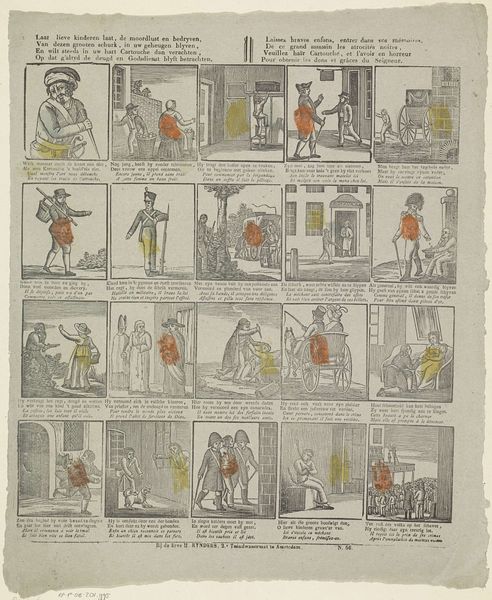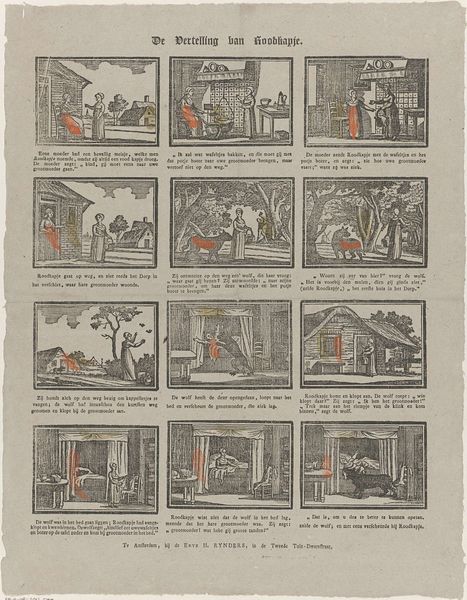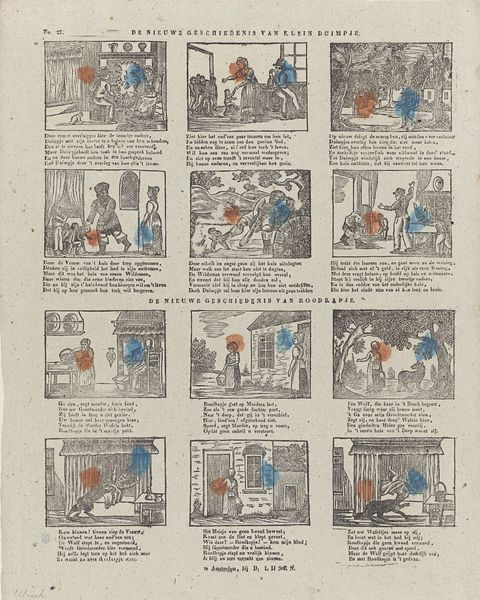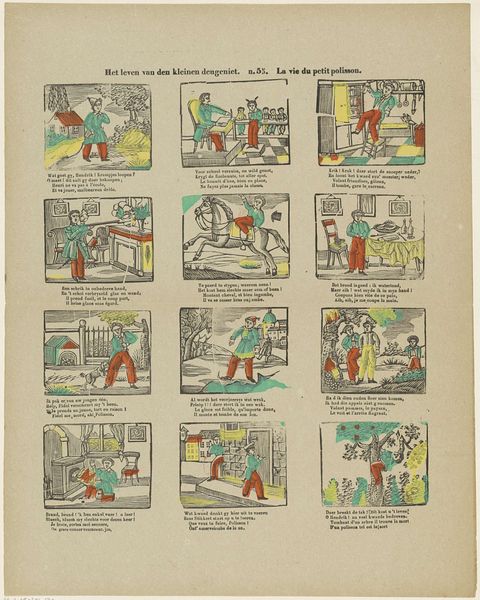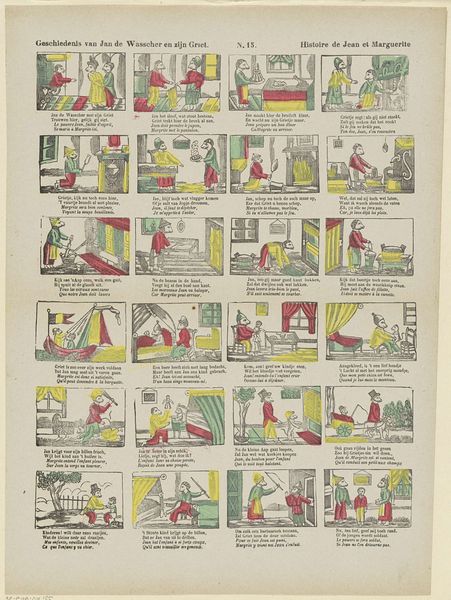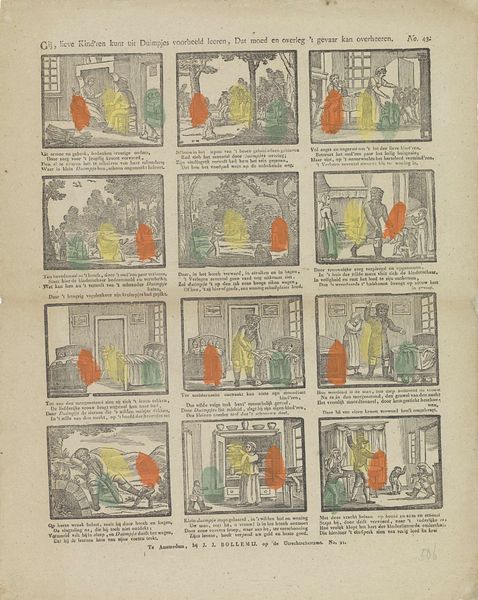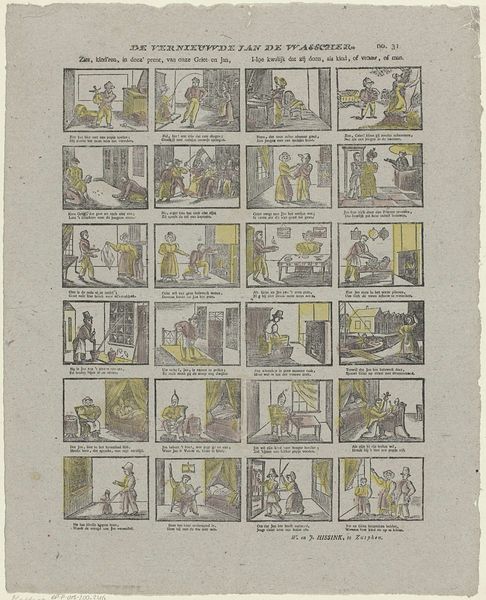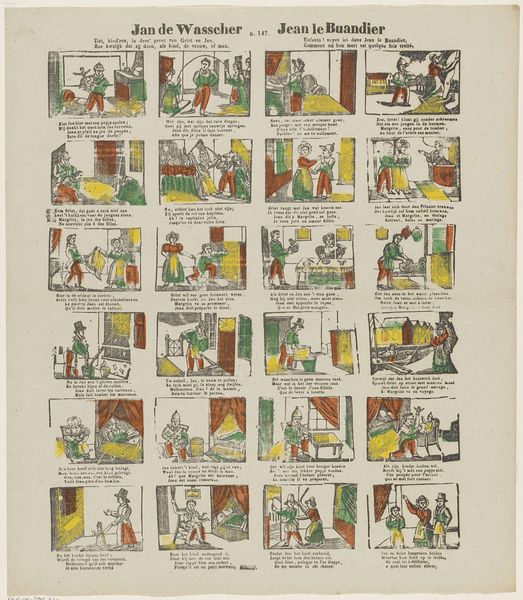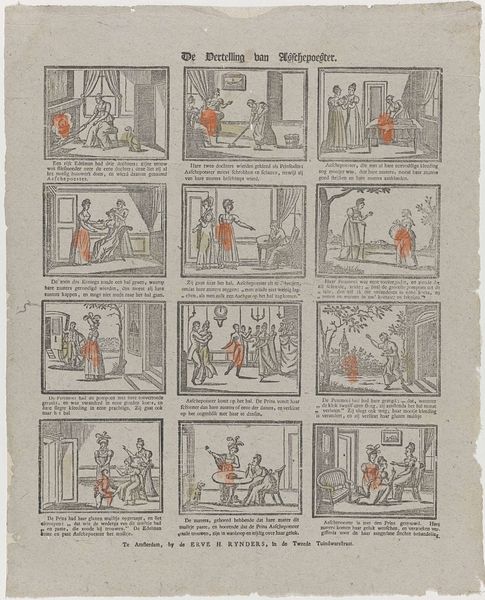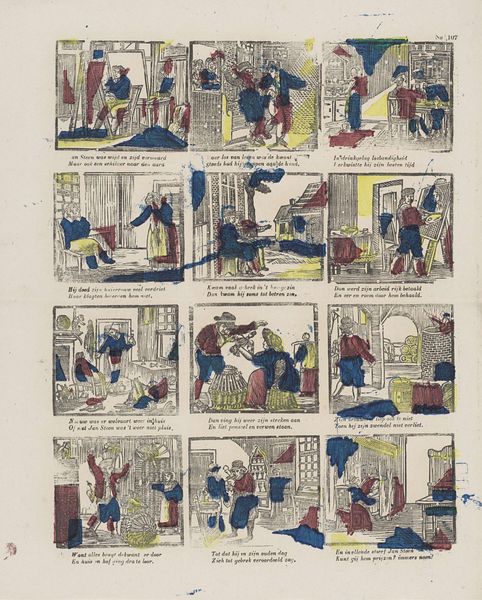
Dat gij, ô jeugd! in deze print, / Alhier u zelve spelend vindt! 1811 - 1829
0:00
0:00
gerritoortman
Rijksmuseum
#
comic strip sketch
#
narrative-art
#
dutch-golden-age
# print
#
comic
#
genre-painting
Dimensions: height 425 mm, width 331 mm
Copyright: Rijks Museum: Open Domain
Curator: Let’s consider this charming print titled "Dat gij, ô jeugd! in deze print, / Alhier u zelve spelend vindt!", created sometime between 1811 and 1829. Editor: My first thought is that it reminds me of a children’s book illustration. There's a lighthearted feel to it, even with those rigid rectangular boxes containing each vignette. Almost like an early precursor to comic books? Curator: Indeed. The work offers a glimpse into the genre-painting traditions of the Dutch Golden Age and how they were evolving. As a print, we can consider the production and accessibility. This piece would have been produced for wider distribution than an unique painting, aimed perhaps at educating children? The print itself could be understood as a common or even pedagogical object. Editor: It makes me wonder who the intended audience was. Was it simply for children, or perhaps parents who would have used the narratives depicted to reinforce certain values? I see what appears to be punishment inflicted in the squares as well, not unlike morality tales. The inscription suggests that the "youths find themselves at play". It really grounds this piece in its socio-historical moment, highlighting education. Curator: Absolutely, it gives voice to the silent narratives of ordinary children within these settings. Each vignette seems carefully crafted to reveal distinct power dynamics – class, familial bonds, and so forth. It raises relevant questions of agency. Consider too how gender is being coded in each framed scene... Editor: Examining this through the lens of printmaking, one wonders about the engraver's craft, what type of press produced the images, the inks used for coloring. Even though this example is located at the Rijksmuseum, in that period I would propose this to be viewed closer to a form of folk art. And the print itself, a form of democratization! Curator: Viewing it in that perspective casts new light on it, transforming the way it resonates with viewers across historical strata. Editor: And emphasizing, as it were, art's entanglement within systems of labor, circulation, and access.
Comments
No comments
Be the first to comment and join the conversation on the ultimate creative platform.
